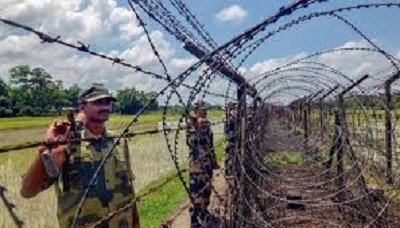India relied on the Myanmar military to keep the border clear of anti-India
S K Singh:Editor-In-Chief

WAR-REPORT : Thus far, the Indian government has not allowed any such presence, suspending the Free Movement Regime with Myanmar and proposing new fencing on its 1,000-mile border. New Delhi maintains ties with the junta while keeping resistance groups at an arm’s length for reasons that encompass border security, domestic politics and geopolitical interests, though this may be shifting.
India has long relied on the Myanmar military to keep the border clear of anti-India insurgents and the drug trade, which is particularly important given the outbreak of ethnic violence in Manipur. India also relies on the junta to safeguard the Kaladan Multi-Modal Transit Project, a grand infrastructure link from Mizoram to the Indian Ocean via Myanmar. Finally, India may worry that breaking with the Myanmar military will cede control of Myanmar to China.
However, India’s reluctance to take an active role in Myanmar and build ties with the resistance has hampered its ability to shape events. The Myanmar military’s scorched earth warfare is creating chaos on the India border, forcing roughly 64,600 refugees into India; the vast majority have gone to Mizoram, which shares ethnic and cultural ties with the Chin people. While the state has welcomed the refugees, their limited resources are increasingly strained without access to outside assistance.

Elsewhere, the Myanmar military is no longer the border’s governing authority; by controlling Paletwa, the AA has become a key actor in completion of the Kaladan link. To preserve border stability and its geopolitical position, New Delhi should consider cultivating partners among anti-junta groups, much as China does on its own border.
There are some signs that New Delhi is reconsidering its stance. In January 2024, India’s Assam Rifles border guards were seen meeting with Chin resistance counterparts at Rikhawdar. On February 29, Mizoram’s sole member of Parliament in the Indian Upper House (Rajya Sabha), K. Vanlalvena, traveled 10 km into Paletwa to meet with the AA, who pledged cooperation on the Kaladan project.

India’s 2024 general election saw the ruling Bharatiya Janata Party (BJP) and its allies lose all four of their Lok Sabha (Lower House) seats in the border states of Mizoram, Manipur and Nagaland, signaling dissatisfaction with how the government has handled ethnic and border issues. While observers expect foreign policy continuity from the BJP, regional parties such as Mizoram’s Zoram People’s Movement may now have even more leverage with the center.
Earlier in 2024, Mizoram’s Chief Minister Lalduhoma met with high-ranking Indian officials, including Prime Minister Narendra Modi, to advocate for changes in border and refugee policy. Post-election, Lalduhoma met with External Affairs Minister S. Jaishankar on June 21, invoking India’s “Act East” regional policy and “challenges on the border.”
A meeting with Home Minister Amit Shah on the same day produced a promise of humanitarian assistance from the center for refugees in Mizoram. While the Indian government has not announced a reversal on the Free Movement Regime, border fencing in Mizoram is now looking less likely.








